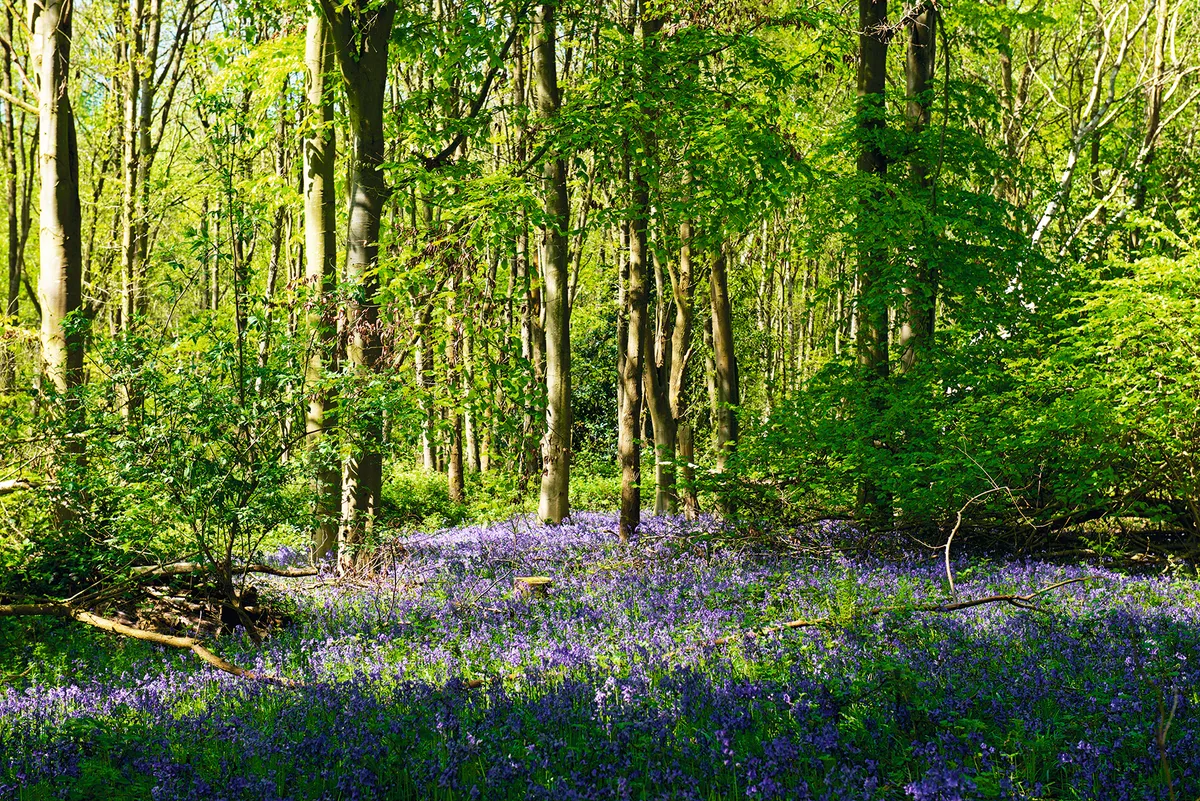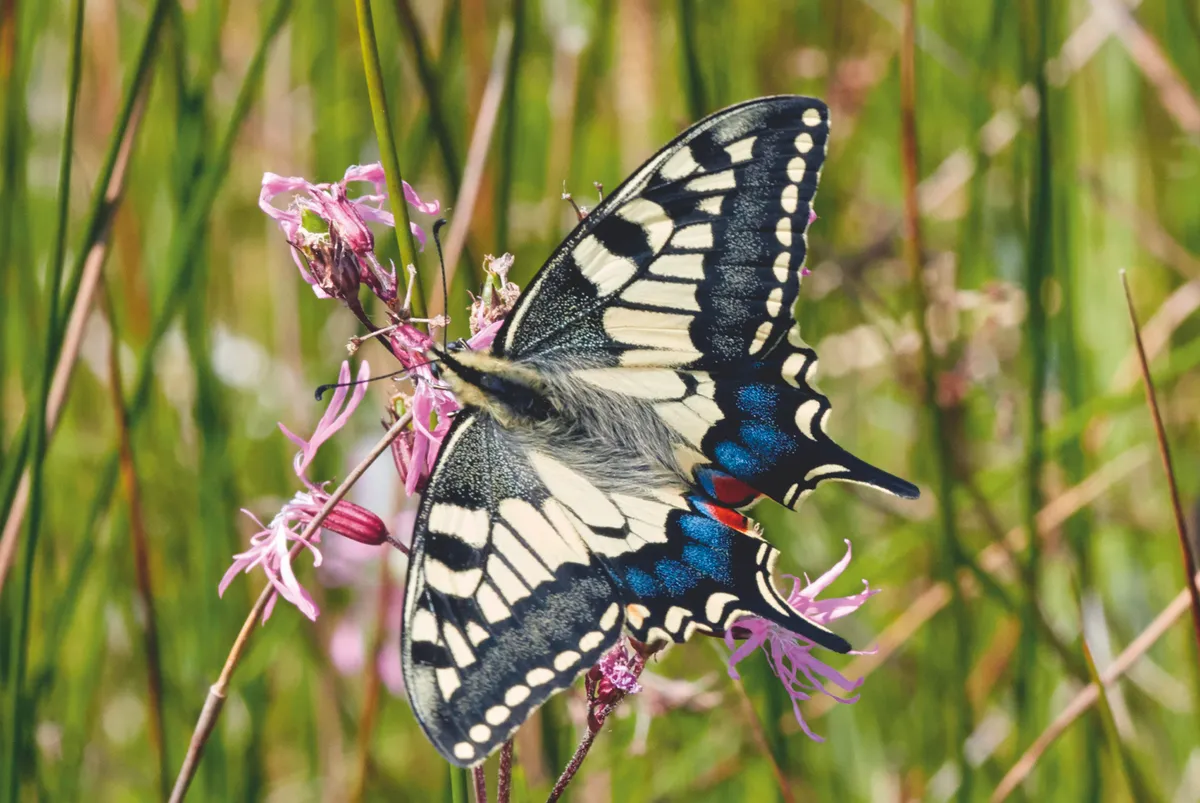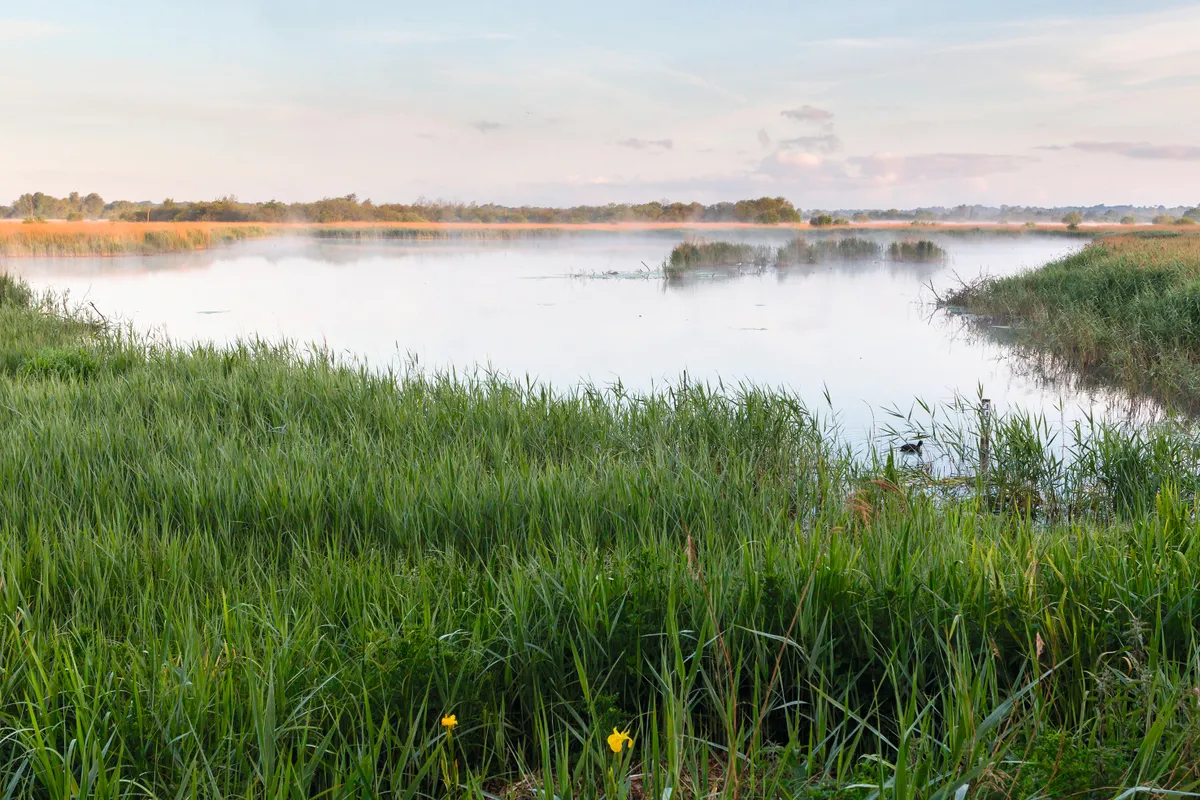You never quite know what to expect when you arrive at Strumpshaw Fen. On one occasion, you may be greeted by a jack snipe from the visitor centre hide, and on another day, a small flock of bearded tits flying back and forth between reedbeds that bordered the lake inlet in front of the same hide.
Situated nine miles east of Norwich, this RSPB reserve is reached along a narrow road from Brundall.

Strumpshaw Fen walk
3.5 miles/5.6km | 2.5 hours | easy
1. Brilliant bluebells
From the car park, carefully cross the railway line (still in use) to the visitor centre, which is small but provides light refreshments, toilet facilities and binocular hire. Enjoy your coffee and cake from the raised platform, which doubles as a viewing hide from which you can first survey the extensive wetland.
A trail leads south from here through a bluebell wood busy with finches, tits, robins and noisy wrens, to where the path splits.

2. Butterfly detour
For a diversion of a mile, you can continue on the woodland trail as far as the bank of the River Yare. Return through a flower-rich meadow, in which orchids and other blooms attract peacock and brimstone butterflies, with milk parsley providing food for the caterpillars of the rare swallowtail butterfly.

3. Fen hide
Back on the longer Fen Trail (2.5 miles), head south-west, following the southern margin of the reedbeds. Another short detour from the trail brings you to Fen Hide, which again looks out across a pool. This is the best viewpoint from which to obtain a first sighting of marsh harriers circling over the reeds, and Chinese water deer tiptoeing along the pool’s edge. These small deer were introduced into Britain in the 19th century and flourished to the extent that their Norfolk numbers now comprise around 10% of the world’s total population.
You might also hear the booming call of a bittern. These secretive birds nest here, so you could be lucky enough to glimpse one of their clutches in the undergrowth.
4. Wildfowl waders
The main track continues to the Yare and follows this to Tower Hide. The river is tidal, and the wakes of passing boats often splash water over the raised bank on to the track, making it quite muddy at times. Climbing the steps into the hide allows expansive views over a pool with paddling flocks of coots, mallards, shelducks and beautifully coloured shovellers, with probably a heron or a couple of egrets standing guard at the pool side.

5. Rail return
Beyond the hide, the footpath continues along the riverbank, then turns right for a straight stretch along which you might again spot a water deer or a swallowtail butterfly.
On reaching the railway track once more, cross it and follow the footpath back to the visitor centre and car park.
Strumpshaw Fen map
Strumpshaw Fen walking route and map

